
The large sedan segment, once the golden goose for Australian carmakers, has hit upon tough times recently. Large-car customers are now swinging towards high-riding SUVs in swathes, playing a part in the death of Australian-built Commodores and Falcons.
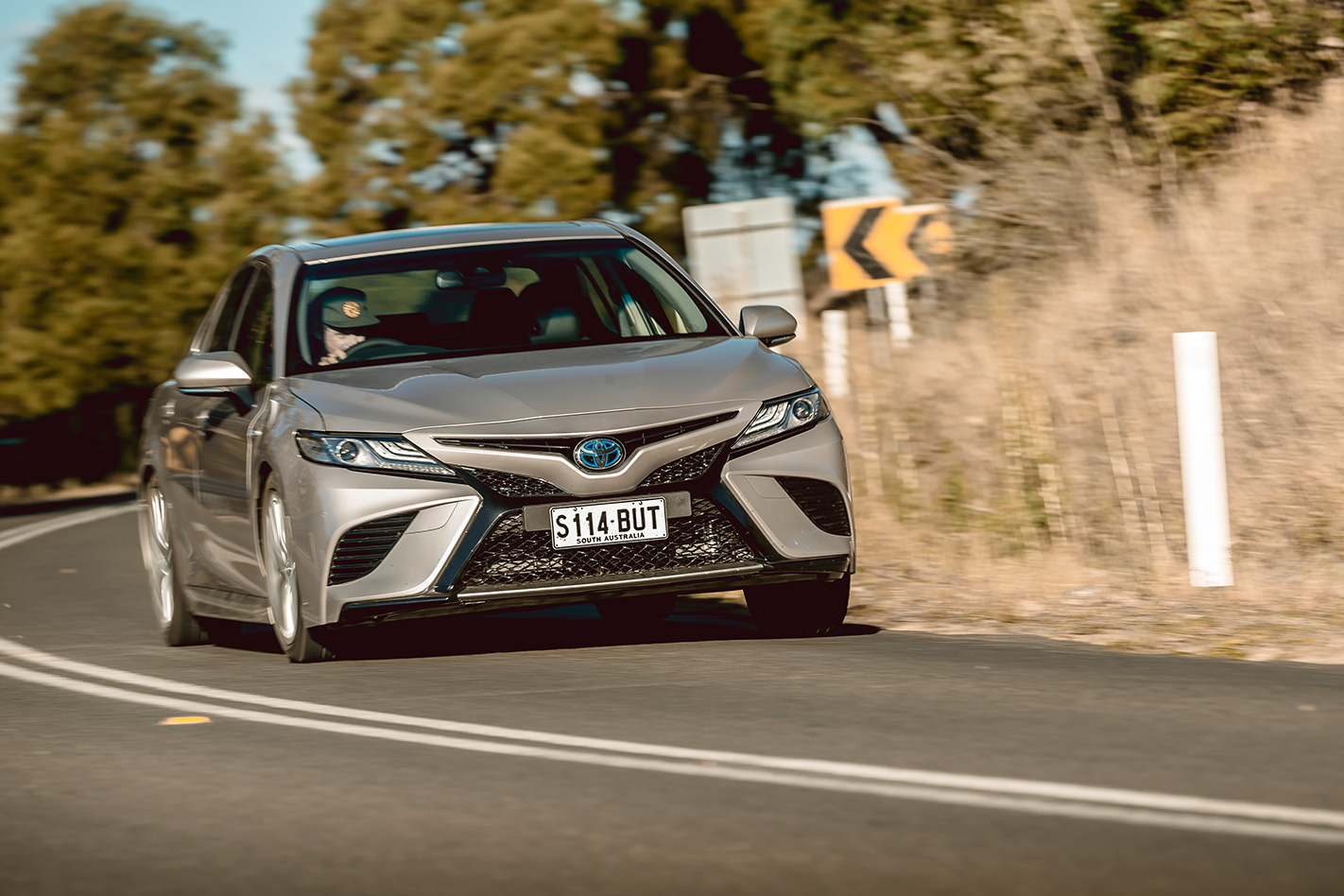
With no locally made product to capture people’s hearts and minds, is the time right for a new hero – from the midsize segment – to rise?
Toyota’s Camry Hybrid is hugely popular with both fleets and private buyers, selling well on the back of a trusted reputation and frugal, eco-friendly powertrain. Meanwhile, Ford’s Mondeo has large shoes to fill, replacing the Falcon.
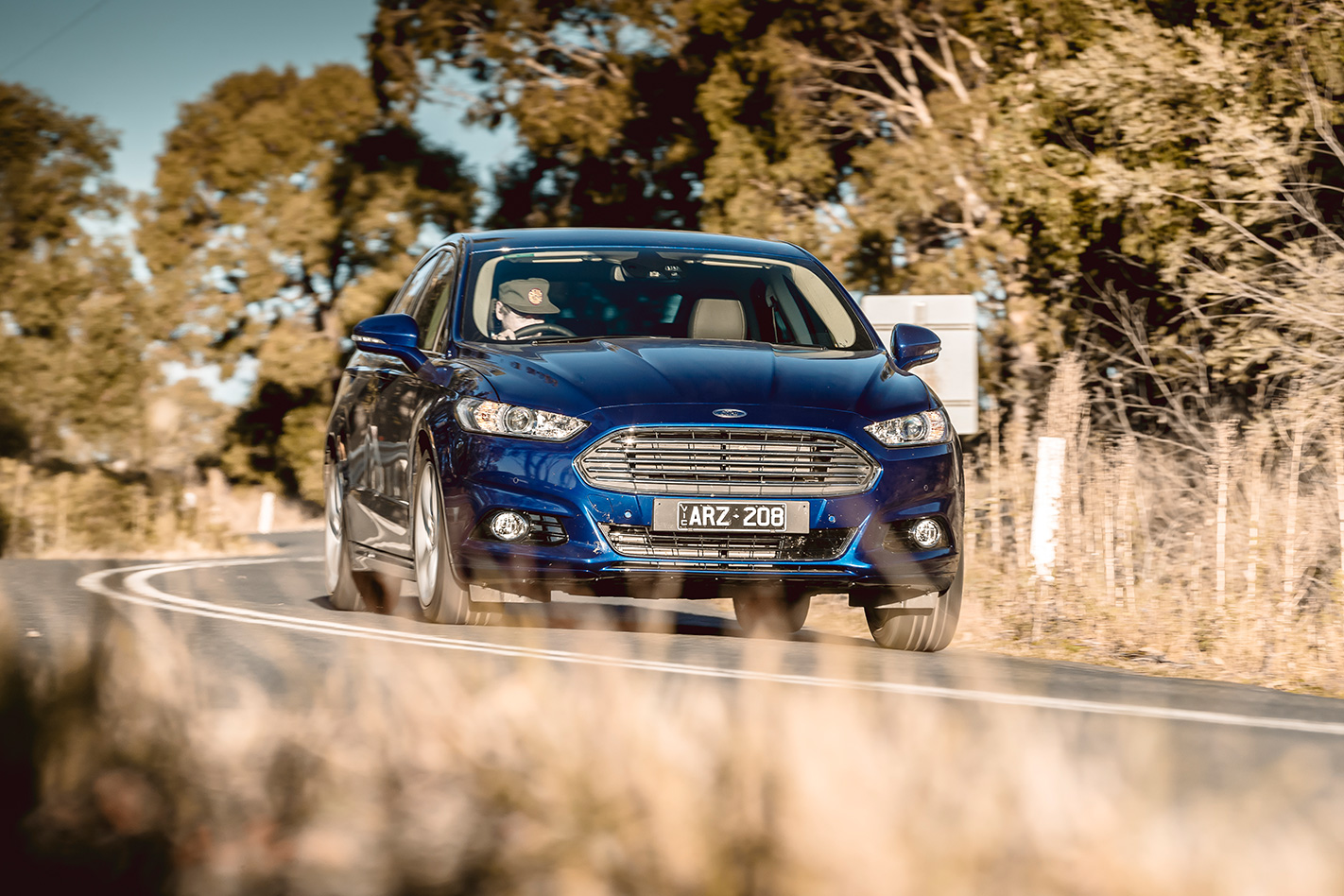
Going against the Mondeo in this face-off is its ageing platform, which was last overhauled in 2012, while the Camry is fresh-faced, both literally and technically, with an all-new, much changed generation.
This is the first Camry Hybrid to be built overseas, coming to Australia via Japan. The Mondeo, meanwhile, is Spanish-built.
This comparison is between the Ford Mondeo Trend, priced from $37,790, and the $40,990 Toyota Camry SL Hybrid. Both these models represent the most common choice that mums and dads, not fleet and rental buyers, favour. Straight away, the Ford is the best-value option for a cash-strapped buyer.
The Camry’s hybrid powertrain uses two main components; a 2.5-litre four-cylinder naturally aspirated petrol engine paired with an electric motor powered by a nickel metal hydride battery. Combined, the petrol engine and electric motor send 160kW to the front wheels via a continuously variable transmission. Toyota doesn’t quote a torque figure; a spokesperson says the engine’s 221Nm and the motor’s 202Nm are delivered in such a varied way as is impossible to measure a linear peak output.
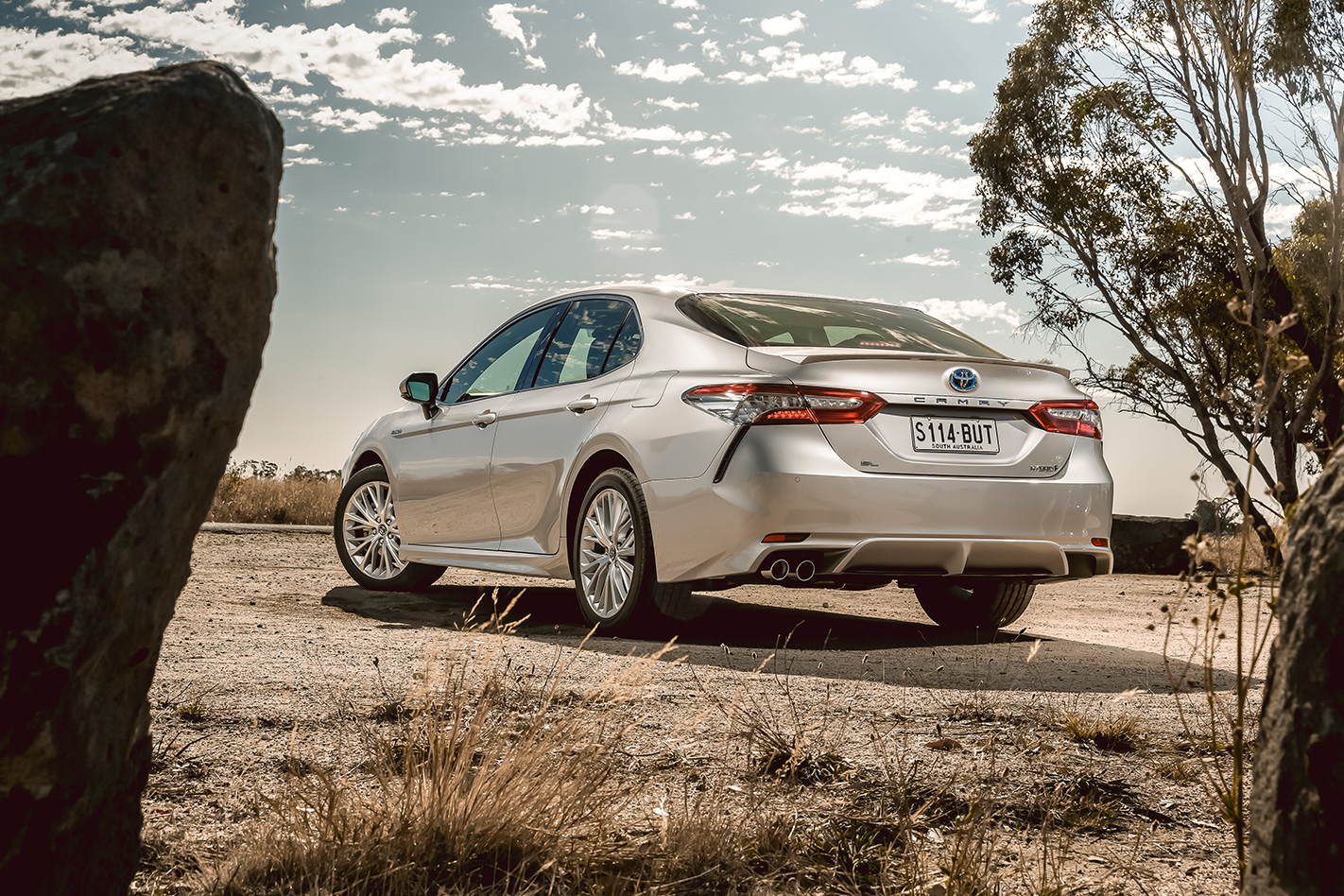
The Toyota’s strong selling point is its claimed ability to sip a class-leading 4.5L/100km of 95RON fuel.
Powering the Mondeo is a 2.0-litre turbocharged four-cylinder petrol engine, sending 177kW and 345Nm to the front wheels via a traditional six-speed automatic.
The on-paper figures translate to the real world, with the more traditional Ford unit thrummy and torquey, and showing plenty of personality. The Camry’s unit, meanwhile, is slick and smooth but outperformed by the Ford’s turbo power. If inner-city driving makes up a large portion of your behind-the-wheel duties, the Camry nails the brief, with a full-EV mode available at slower speeds.
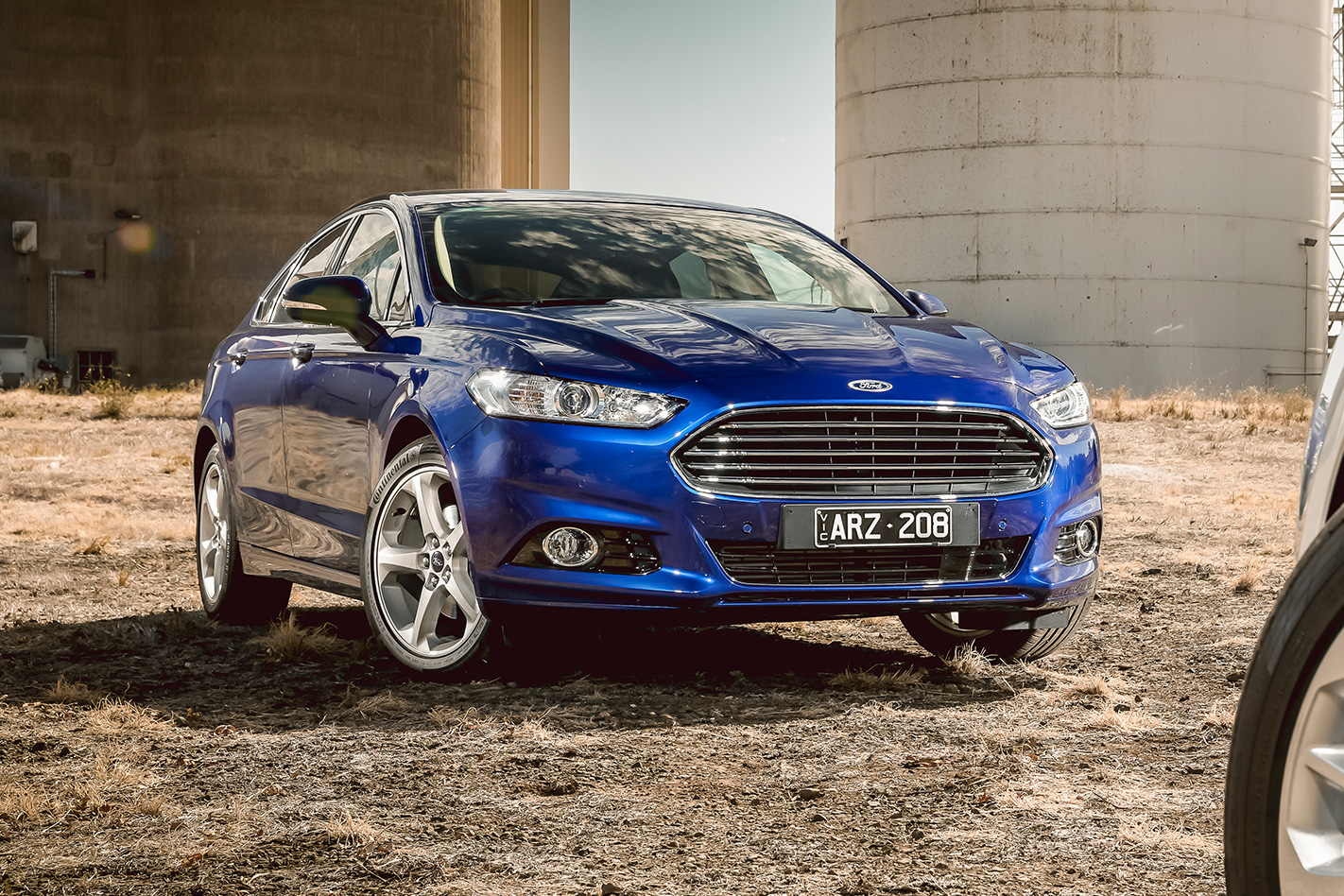
The Camry has a softly sprung ride, but it is supple and sweetly damped – gliding along with a Lexus-like sheen that is extremely alien to previous generations of the Toyota. This suspension tune has been a much-needed ingredient missing from Camry for at least 25 years.
The well-damped Ford gains an advantage as soon as the road starts to bend and tighten, with a ride that blends dynamic prowess and ride comfort. For the enthusiast driver, the Mondeo is the pick of the pair.
That’s not to say the Camry falls short on twisty roads. Pushed hard, it will hang on well, but lacks the body control of the Mondeo.
Rear-seat comfort is another victory for the Camry. Those in the second row are treated to independent LED reading lights, deep door pockets, soft touch points around everything but the window switches, a centre armrest set low and long with two cupholders, two USB ports and two air vents with flow, but not temperature, control.
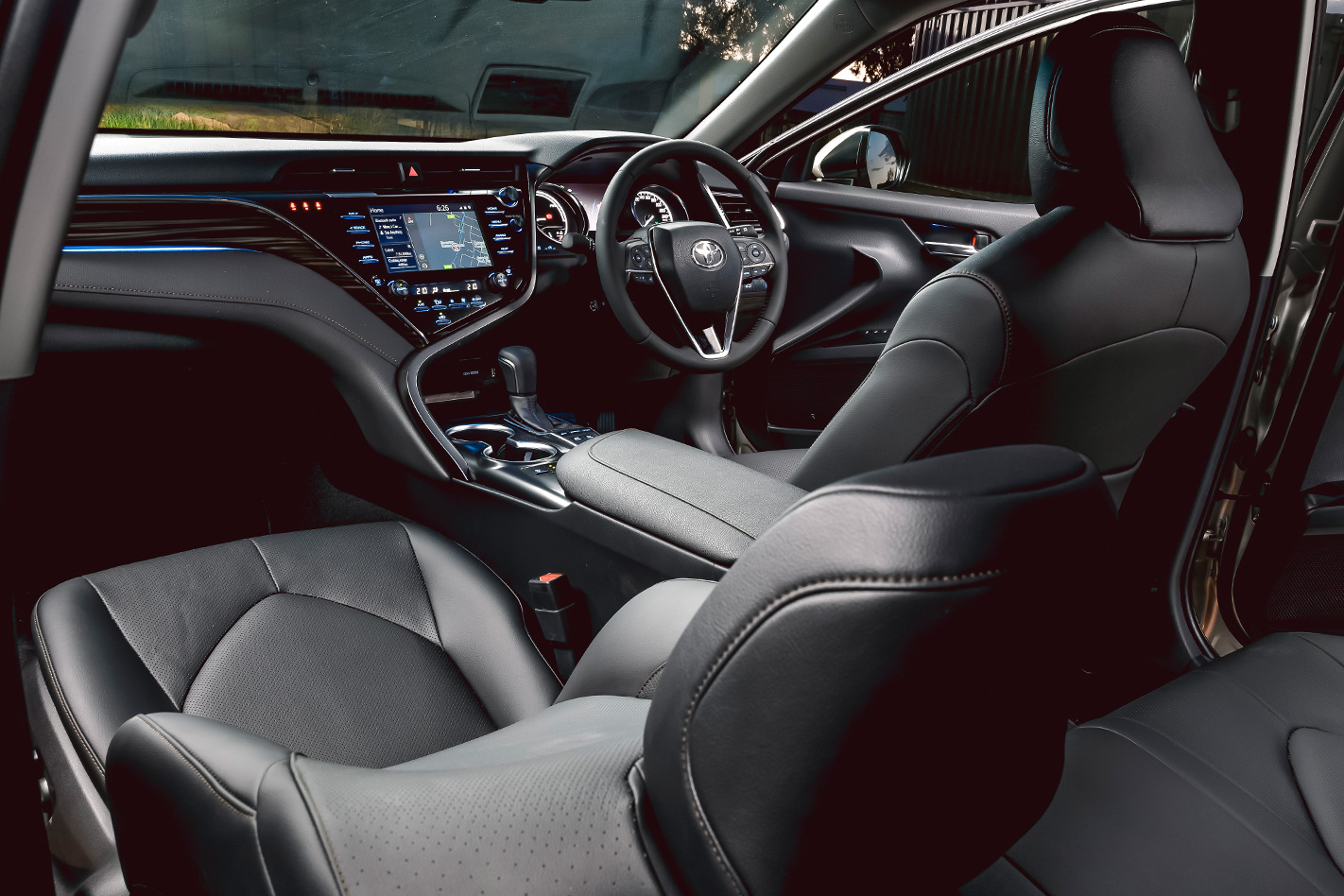
Passenegrs in the rear of the Mondeo have no USB ports, a single central LED reading light, smaller door pockets, fewer soft surfaces (but it is where it counts), and two air vents that lack flow and temperature control. They’re also forced to deal with a sloping roofline that cuts heavily into rear headroom – not an issue in a Camry that is even equipped with a sunroof.
The seat trim of the Mondeo has a plusher feel compared with the Camry, using a combination of leather and an Alcantara-esque suede material.
The Mondeo also uses Ford’s Sync3 system, and while the interface graphics look dated compared with the fresher Toyota’s, it is an intuitive and easy system to navigate. The Blue Oval sound system is a banger, with impressive clarity and volume, and outshines the Toyota’s unit.
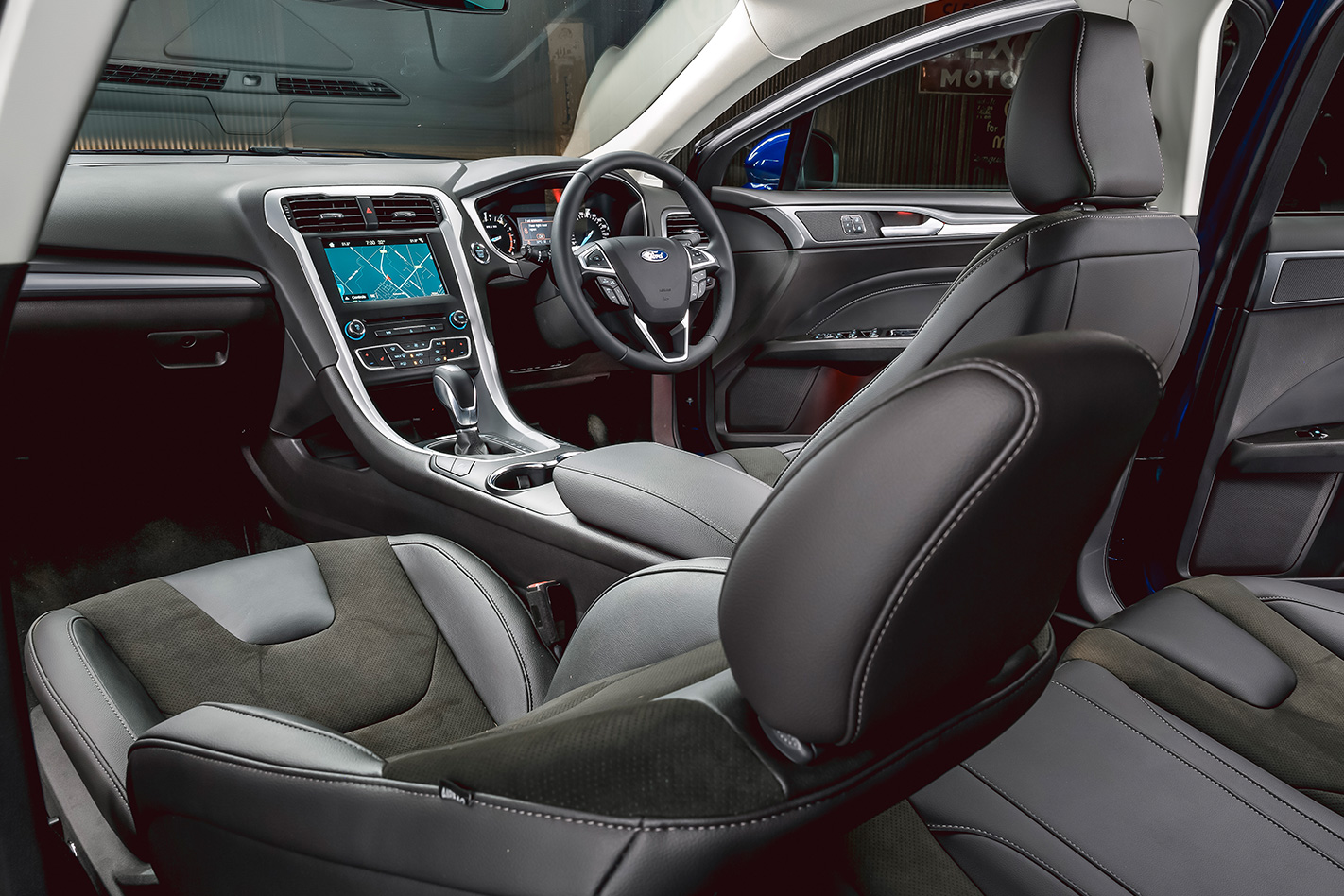
The Camry’s wireless charging feature is for serious tech-heads, but smartphone mirroring – a coveted feature for some buyers – is poorly supported. The Mondeo also shuns Android Auto and Apple CarPlay.
The Camry’s new Linux-powered multimedia interface is much easier to navigate than previous generations, though for safety reasons it will lock you out of a number of functions while the car is moving.
When it comes to the duo’s looks, the Mondeo and Camry are at opposite ends of the spectrum – where the Ford is conservative, bordering on a tad boring, the Toyota’s design is exotic, and divisive.
Design is always a subjective thing, but Toyota should be commended for giving the Camry a bold, striking look after decades of forgetful meh. Meanwhile, it would be unfair to slander the subdued styling of the Mondeo, which is understated and belies its capable nature. The Blue Oval’s largest sedan has a handsome, muscular stance, but it doesn’t really move the game forward.
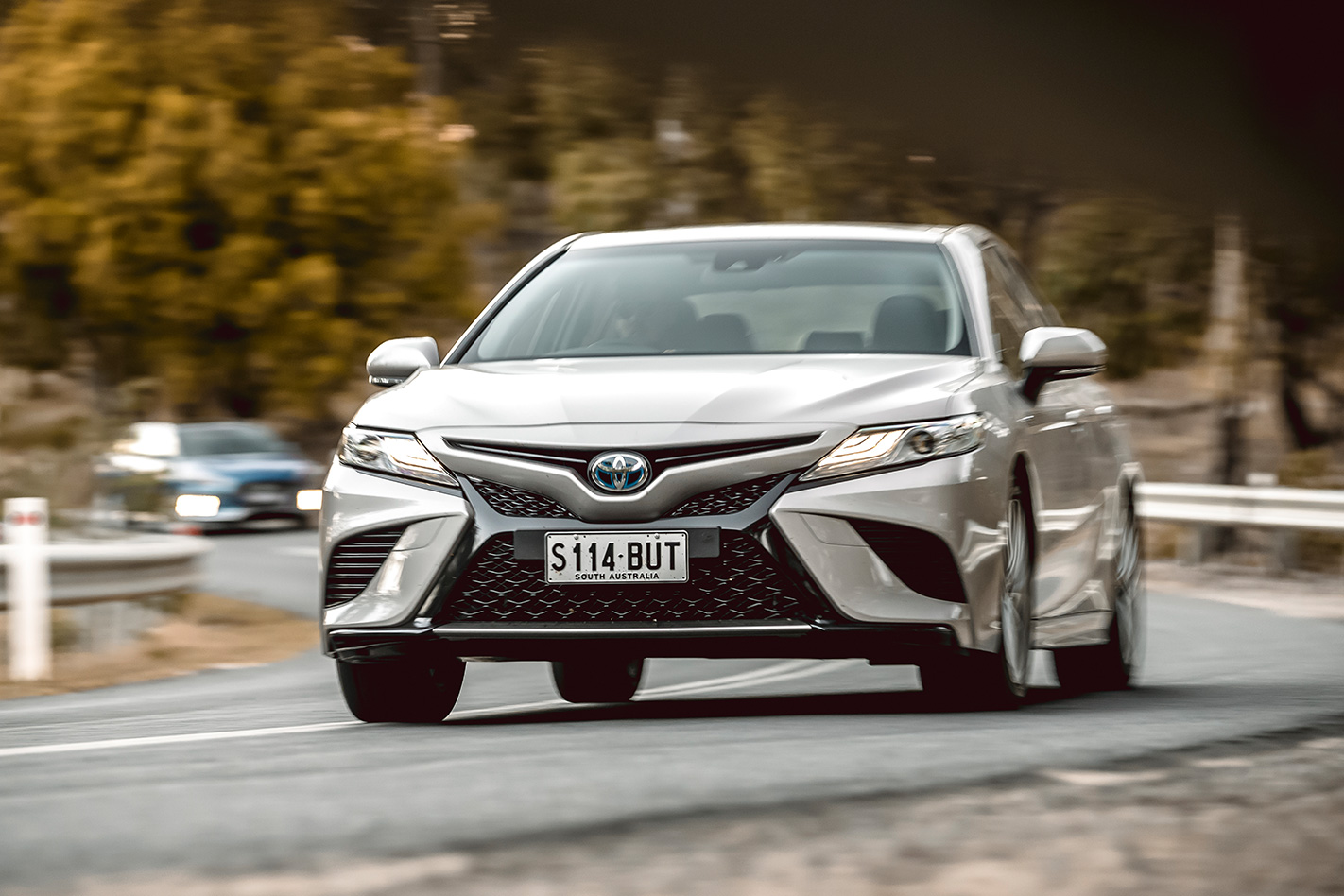
Overall, the Camry comes out with the victory here, but not by as big a margin as you’d expect.
While the Mondeo is ageing, it still holds up well against the competition, and outshines the Toyota in a number of areas, namely price, dynamic ability and performance.
However, for many, the plush ride, smooth and frugal powertrain, and slick interior design of the Camry – more commonly associated with Toyota’s Lexus luxury brand – will be difficult to walk past in the showroom.




